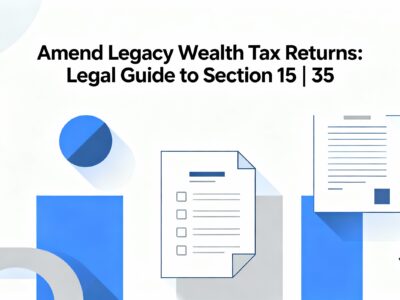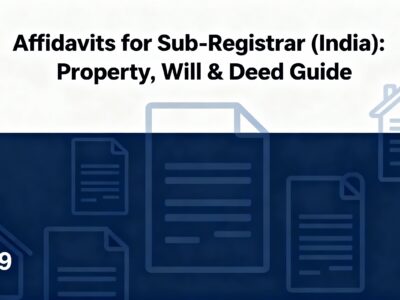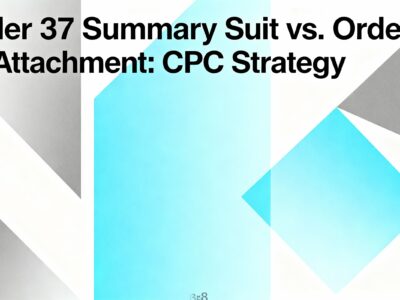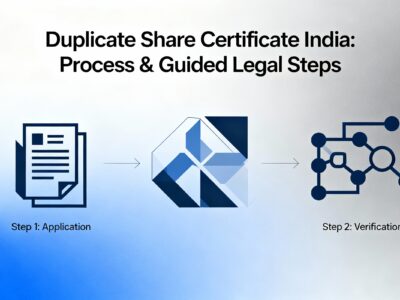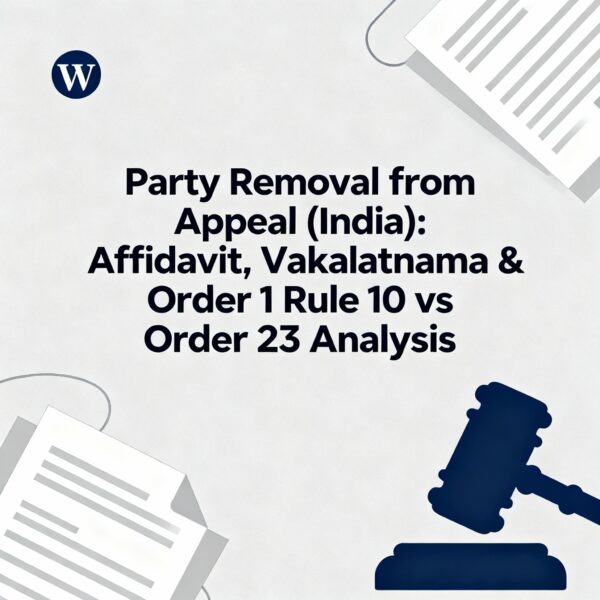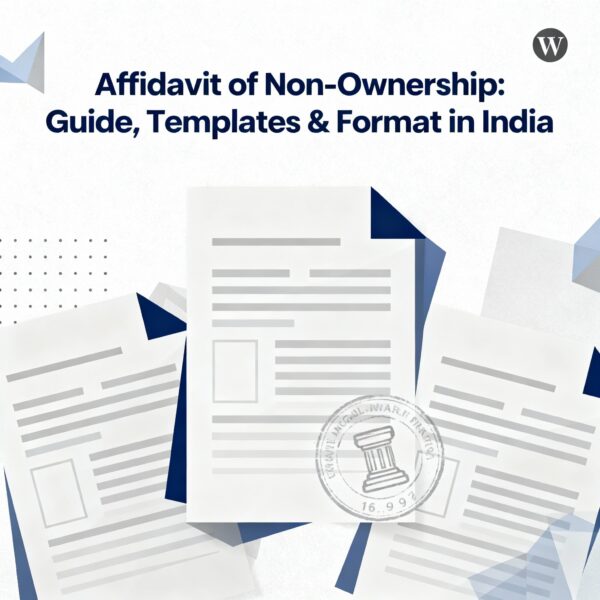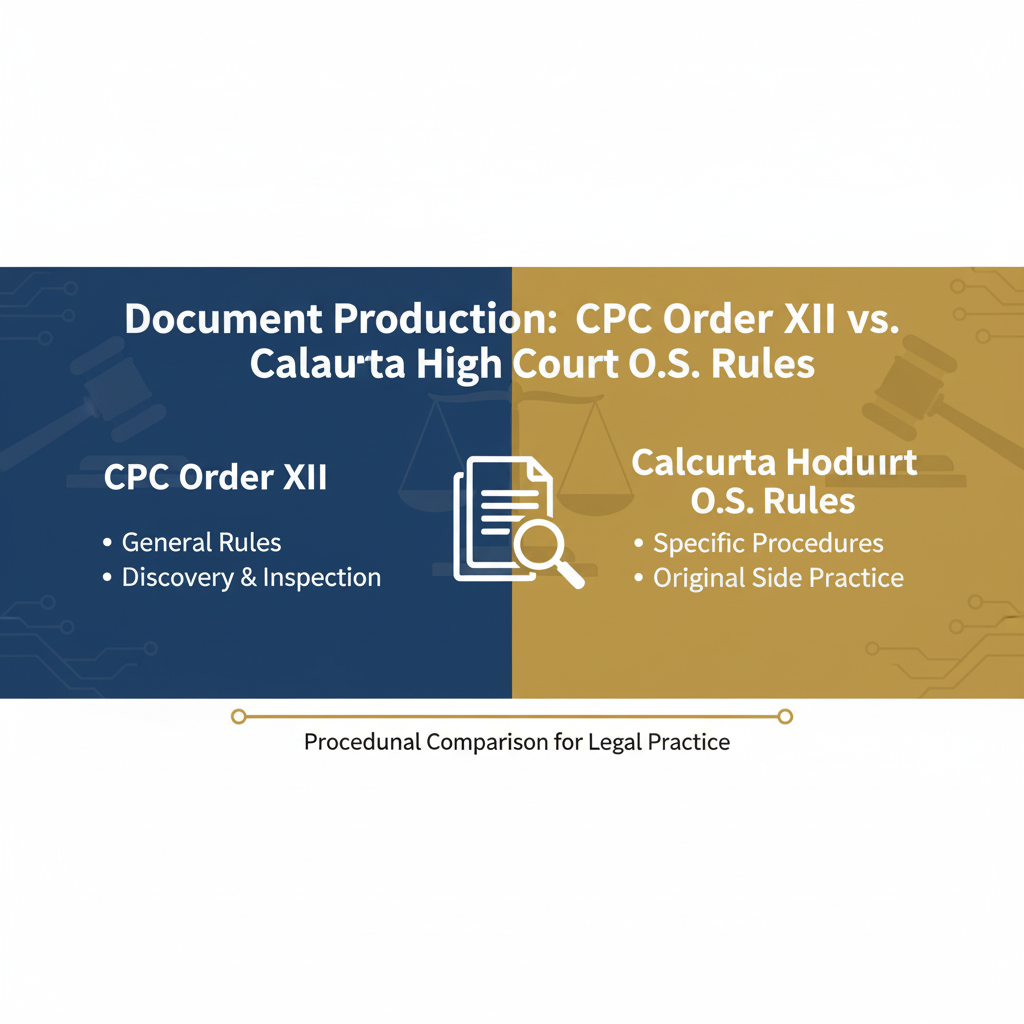File a Caveat in India: Template Format | Guide to Sec 148-A CPC
Anticipating legal action in India? Filing a Caveat Petition under Section 148-A of the Code of Civil Procedure (CPC) is your most crucial proactive defense. This powerful legal tool is designed to protect your fundamental right to be heard, preventing damaging ex-parte orders from being passed against you without your knowledge. This comprehensive 2025 guide, tailored for both litigants and legal professionals, breaks down the entire process—from understanding the strategic importance of a caveat to the step-by-step instructions for filing, complete with multilingual legal formats, an interactive checklist, and expert analysis of landmark judgments.
The Ultimate Guide to Caveat Petitions
Your comprehensive legal and practical guide to Section 148-A of India's Code of Civil Procedure. Updated for October 2025.
Last Updated: October 16, 2025
What is a Caveat? The Right to Be Heard
At the heart of any fair legal system is the principle of Audi Alteram Partem — a Latin phrase meaning "let the other side be heard." A Caveat Petition, under Section 148-A of the Code of Civil Procedure, 1908, is the statutory embodiment of this very principle in India.
In simple terms, a caveat is a formal warning lodged with a court to prevent it from passing any order in a case without first notifying the person who filed it (the "Caveator"). It's a pre-emptive legal shield for anyone who anticipates legal action against them.
Introduced in 1976, this provision was designed to stop the common practice of parties obtaining surprise one-sided (*ex-parte*) interim orders, which often caused irreparable harm. It ensures fairness and procedural justice from the very start of a legal dispute.
Who Can File a Caveat? Understanding 'Locus Standi'
The right to file a caveat is not open to everyone. It is available to any person who has a direct and tangible interest in the legal matter. This is known as having 'locus standi' (the right to appear in court).
The Key Requirement: A Reasonable Apprehension
The person filing (the Caveator) must have a genuine and justifiable fear that a civil proceeding will be initiated against them, or is about to be initiated, in which an order might be passed that adversely affects their interests. A vague or baseless fear is not sufficient grounds.
This includes not only the defendants in an expected suit but also third parties whose rights might be impacted by a potential court order in a case between two other parties.
Why File a Caveat? Strategic Advantages
Prevent Ex-Parte Orders
The primary goal is to shield yourself from harmful one-sided court orders, ensuring you're not caught off guard by an injunction or stay.
Secure Right to Be Heard
It guarantees your presence at the very first hearing, allowing you to present your case before any decision is made.
Save Time & Money
By avoiding ex-parte orders, you prevent the need for further applications to have them cancelled, reducing litigation costs and court time.
Section 148-A: A Tripartite Procedural Covenant
Section 148-A creates a chain of duties between the Caveator (you), the Applicant (your opponent), and the Court. This infographic illustrates the process flow.
Duties
Lodges caveat in court & serves notice to the Applicant via RPAD.
Duty
Once an application is filed, the Court must serve notice on the Caveator.
Duty
Must furnish a copy of their application and all documents to the Caveator.
The 90-Day Lifecycle of a Caveat
A caveat isn't permanent. It has a strict 90-day validity period from the date of filing. Understanding this lifecycle is crucial to maintaining your legal protection.
Jurisdiction: The Critical Question of Where to File
Filing a caveat in the wrong court is a fatal mistake; it offers no protection. The rule is simple: the caveat must be filed in the court where the suit, appeal, or application is expected to be instituted.
Original Suits
File in the Civil Court (e.g., District Court, Civil Judge Sr./Jr. Division) that has the territorial and financial jurisdiction to hear the potential suit.
Appeals and Revisions
File in the appellate court (e.g., District Court, High Court, or Supreme Court) where you anticipate an appeal or revision will be filed against a lower court's order.
Special Tribunals
For matters in tribunals like the National Company Law Tribunal (NCLT) or Debt Recovery Tribunal (DRT), the caveat must be filed directly with that specific tribunal or its appellate body.
How to File a Caveat: A Step-by-Step Guide
-
1
Pre-Filing Preparation
The Foundation of Your Petition
Identify the correct court, assemble all necessary documents, and calculate the court fees. This initial step is critical to avoid rejection.
-
2
Serve Notice on Opponent
Mandatory Condition Precedent
Before filing in court, you MUST send a copy of the caveat petition to your opponent(s) by Registered Post with Acknowledgement Due (RPAD). Keep the postal receipt safely.
-
3
File with the Court Registry
Making it Official
Submit the complete set of documents to the court's filing counter. The registry will scrutinize it, and if complete, will assign a Caveat Number.
-
4
Await Court Action
The Waiting Game
If your opponent files a case within 90 days, the court will notify you. Be prepared to appear on the first day of hearing.
Interactive Filing Checklist
Use this interactive checklist to ensure your filing is complete and accurate. A single missing document can render your caveat defective.
Caveat vs. Legal Notice: Key Differences
| Feature | Caveat Petition | Legal Notice |
|---|---|---|
| Purpose | Defensive shield to prevent ex-parte court orders. | Offensive demand for action or compensation from an opponent. |
| Recipient | Filed with a Court or Tribunal. | Sent directly to the opposing party. |
| Legal Effect | Obligates the court to notify you before passing any order. | Acts as a formal warning and can be used as evidence later. |
| Validity | Valid for 90 days from the filing date. | Specifies a response period (e.g., 15 or 30 days). |
Caveats in Special Proceedings: A Deeper Dive
While Section 148-A is part of the Civil Procedure Code, its principles of natural justice are often applied to various special forums and tribunals. Here's how caveats function in different legal arenas:
Arbitration Matters
Company Law (NCLT/NCLAT)
Consumer Disputes (NCDRC/SCDRC)
Common Pitfalls & How to Avoid Them
DOs: Best Practices
- Verify the correct court jurisdiction meticulously.
- Serve notice via RPAD *before* filing and keep the receipt.
- Use a checklist to ensure all documents are included.
- Diarize the 90-day expiry date and renew in advance.
DON'Ts: Common Errors
- Don't file in the wrong court; it's a fatal error.
- Don't forget to serve notice; your caveat will be invalid.
- Don't use vague language in your petition. Be specific.
- Don't assume it's permanent; a lapsed caveat is useless.
Landmark Judgements & Interpretations
The interpretation of Section 148-A has been shaped by several key court decisions. These landmark judgements clarify its scope and application.
Nirmal Chand v. Girindra Narayan (AIR 1978 Cal 492)
Calcutta High Court
Principle: This foundational case established that a caveat can be filed even before a suit or proceeding is initiated, based on a reasonable apprehension. It clarified that the section is not limited to appeals and can be used for original proceedings as well.
C.G.C. Enterprise v. State of A.P. (1980 ALT 372)
Andhra Pradesh High Court
Principle: The court held that the requirement to serve a notice on the caveator is mandatory. Any order passed without complying with this statutory duty is illegal and liable to be set aside. It reinforced the procedural safeguards of the section.
Reserve Bank of India Employees Association v. The Reserve Bank of India (AIR 1981 AP 246)
Andhra Pradesh High Court
Principle: This case clarified that a third party who is not a party to the expected suit but has a direct interest in the outcome of the matter can also file a caveat. It broadened the scope of 'any person' who can avail this remedy.
Consequences of Non-Compliance
When a valid caveat is on record, failure by the court or the applicant to follow the procedure under Section 148-A has serious legal consequences, rendering the proceedings irregular and the orders passed therein unsustainable.
What Happens if a Caveat is Ignored?
Effect on Ex-Parte Orders
Any interim order (like an injunction or stay) passed in a proceeding without giving notice to the caveator is considered to have been passed without jurisdiction. While not automatically void, such an order is illegal and must be set aside upon an application by the caveator. The caveator does not need to argue the merits of the case; the procedural failure itself is sufficient ground for setting aside the order.
Frequently Asked Questions
Can I file a caveat in a criminal case?
What happens if the court passes an order without notifying me?
Do I need a lawyer to file a caveat?
Drafting an Effective Caveat: Beyond the Template
A well-drafted caveat is precise and leaves no room for ambiguity. While the template provides the structure, experienced practitioners focus on these key details:
- Specificity is Key: Clearly state the nature of the apprehended suit or application (e.g., "a suit for declaration and permanent injunction relating to property at...") and the specific relief you expect the opponent to seek (e.g., "an ex-parte ad-interim injunction restraining the Caveator...").
- Accurate Parties: Ensure the names and addresses of all potential applicants/plaintiffs are correct and complete. An error here could allow them to file under a slightly different name, bypassing your caveat.
- Supporting Affidavit: The affidavit must clearly state the facts that give rise to the "reasonable apprehension." It should briefly outline the dispute and the Caveator's interest in the matter.
- Prayer Clause: The prayer should be clear and concise, simply requesting that no ex-parte orders be passed without notice. Avoid adding any other prayers or arguments on merits.
Legal Format & Sample Drafts
Filing a caveat involves two main documents: the Caveat Petition itself and a supporting Affidavit. Below are detailed sample drafts based on common legal practice for filing in a High Court against an appeal. For simpler matters in lower courts, the format is similar but less formal.
Sample 1: Caveat Petition in High Court (Appeal)
This is the main application filed with the court registry.
IN THE HIGH COURT OF JUDICATURE AT [CITY]
(Appellate Civil Jurisdiction)
CAVEAT PETITION NO. ______ OF 2025
IN
PROPOSED APPEAL NO. ______ OF 2025
BETWEEN:
[Caveator's Name]
S/o [Father's Name], aged about [..] years,
Residing at [Full Address]
... CAVEATOR / PROPOSED RESPONDENT
AND
[Caveatee's / Opponent's Name]
S/o [Father's Name], aged about [..] years,
Residing at [Full Address]
... CAVEATEE / PROPOSED APPELLANT
PETITION FILED UNDER SECTION 148-A OF C.P.C.
The address for service of all notices on the above-named Caveator is that of his counsel, [Advocate's Name], [Advocate's Full Office Address].
For the reasons stated in the accompanying affidavit, the Caveator herein prays that this Hon'ble Court may be pleased to direct the proposed Appellant to serve the affidavit, petition, grounds and all material papers on the Caveator's Advocate before any orders are passed, and pass such other or further order or orders as may be deemed fit and proper in the circumstances of the case.
Place: [City]
Date: [Date]
[ADVOCATE'S NAME]
ADVOCATE FOR CAVEATOR
Sample 2: Supporting Affidavit
This sworn statement explains the reason for filing the caveat and must accompany the petition.
IN THE HIGH COURT OF JUDICATURE AT [CITY]
(Appellate Civil Jurisdiction)
CAVEAT PETITION NO. ______ OF 2025
Affidavit of the Caveator, [Caveator's Name]
I, [Caveator's Name], S/o [Father's Name], aged about [..] years, residing at [Full Address], do hereby solemnly affirm and state as follows:
1. I am the Caveator herein and the Respondent in the proposed appeal. I am well acquainted with the facts of the case and am competent to swear this affidavit.
2. I submit that I was the original Plaintiff/Defendant in Suit No. [.....] of [Year] on the file of the [Name of Lower Court], which was decreed/dismissed in my favour on [Date of Order].
3. I have a reasonable apprehension that the Caveatee herein, being aggrieved by the said judgment and decree, is taking steps to file an appeal before this Hon'ble Court and may also file an application for an ex-parte interim injunction/stay of the lower court's order.
4. If any such ex-parte order is passed without giving me an opportunity to be heard, it will cause me irreparable loss and injury.
5. I state that a copy of the Caveat Petition has been served on the Caveatee by Registered Post with Acknowledgment Due.
It is therefore prayed that this Hon'ble Court may be pleased to take this affidavit on record in the interest of justice.
DEPONENT
VERIFICATION:
Verified at [City] on this the [..] day of [Month], 2025, that the contents of the above affidavit are true to my personal knowledge.
DEPONENT
Solemnly affirmed before me,
ADVOCATE
Conclusion: The Power of Proactive Protection
The Caveat Petition under Section 148-A is more than just a procedural formality; it is a vital safeguard that reinforces the principles of natural justice. It transforms a potential defendant from a passive recipient of court orders into an active participant from the very outset of litigation.
By understanding its strategic advantages, following the correct procedure, and avoiding common pitfalls, you can effectively use this powerful tool to protect your interests, prevent undue hardship, and ensure that your voice is heard. In the complex world of civil litigation, the humble caveat stands as a testament to the idea that foresight and preparedness are a litigant's most valuable assets.
Remember, while this guide provides comprehensive information, it is not a substitute for professional legal advice. Always consult with a qualified advocate for guidance specific to your case.



